- Home
- Kurt Vonnegut
Fates Worse Than Death: An Autobiographical Collage
Fates Worse Than Death: An Autobiographical Collage Read online
Fates Worse Than Death
An Autobiographical Collage
Kurt Vonnegut
Copyright
Fates Worse Than Death
Copyright © 1991 by Kurt Vonnegut
Cover art to the electronic edition copyright © 2011 by RosettaBooks, LLC
The author gratefully acknowledges permission from the following sources to use previously published material, on the pages indicated: Architectural Digest (pp. 37–40); The Franklin Library (pp. 45 48. copyright © 1987, and pp. 129–130, copyright © 1990 by The Franklin Library. Franklin Center, Pennsylvania, for exclusive use in its Signed First Editions of Bluebeard and Hocus Pocus, respectively); Four Walls Eight Windows (pp. 56-59); Lear’s (pp. 113–116), first published 1988)’ The Nation magazine/The Nation Co. Inc. (pp. 132–137. copyright © 1983); The New York Times Company (pp. 183–187, copyright © 1990 by The New York Times Company; reprinted by permission); Kroch’s & Brentano’s (pp. 187–188); Dell Publishing Group, Inc., and Mark Vonnegut (pp 205-207, afterword to the 1988 edition of The Eden Express)
Some material appeared previously, in slightly different form, in Architectural Digest. Esquire. Parade, and Time.
The author wishes to thank Dean Brelis, John F. Collins, the Reverend Paul Jones, Tom Jones, Mary T. O’Hare, and John Updike.
All rights reserved. No part of this book may be used or reproduced in any manner whatsoever without written permission except in the case of brief quotations embodied in critical articles and reviews.
Electronic edition published 2011 by RosettaBooks LLC New York
ISBN Mobipocket edition: 9780795318672
All persons living and dead are purely coincidental, and should not be construed. No names have been changed in order to protect the innocent since God Almighty protects the innocent as a matter of Heavenly routine.
In Memory of Kurt Vonnegut (Sr.)
O God who hast hitherto supported me, enable me to proceed in this labor & in the whole task of my present state that when I shall render up at the last day an account of the talent committed to me I may receive pardon for the sake of Jesus Christ. Amen.
—SAMUEL JOHNSON,
diary entry for April 3, 1753,
when he was working on his
Dictionary of the English Language*
*April 3, therefore, might be called “Writer’s Day.”
Contents
Preface
I
II
III
IV
V
VI
VII
VIII
IX
X
XI
XII
XIII
XIV
XV
XVI
XVII
XVIII
XIX
XX
XXI
Appendix
What My Son Mark Wanted Me To Tell The Psychiatrists in Philadelphia, Which Was Also The Afterword To A New Edition Of His Book The Eden Express
What Bernard V. O’Hare Said About Our Friendship On My Sixtieth Birthday
From “The Bomber’s Baedeker” (Guide To The Economic Importance Of German Towns and Cities, 1944)
English Translation Of The Latin Mass Promulgated By Pope St. Pius V in 1570 By Decree Of The Council Of Trent
Mass Promulgated By Me In 1985
Latin Version Of My Mass By John F. Collins
Unpublished Essay By Me, Written After Reading Galleys Of An Anthology Of First-Rate Poems And Short Prose Pieces By Persons Who Were Or Are In Institutions For The Mentally ill
My Reply To A Letter From The Dean Of The Chapel At Transylvania University About A Speech I Gave There
PREFACE
We were on a sightseeing bus in Stockholm during an international congress of the writers’ organization P.E.N. (Poets, Playwrights, Essayists, Editors, Novelists) in 1973. I told Henreich Böll of a German veteran of World War II (then a carpenter of my acquaintance on Cape Cod) who had shot himself in the thigh in order to get away from the Russian Front but whose wound had healed by the time he got to a hospital. (There was talk of a court-martial and a firing squad, but then the Red Army overran the hospital and took him prisioner.) Böll said that the correct way to shoot yourself was through a loaf of bread, in order to avoid powder burns. That is what we laughed about. (The Vietnam War was going on then, during which many infantrymen surely considered wounding themselves and pretending that it had been done by an enemy.)
Later on (when we had stopped laughing) he said that the French writers Jean-Paul Sartre and Albert Camus came looking for German writers after World War II, saying in effect, “You must tell us what it was like for you.” (Böll, like Sartre and Camus, would win a Nobel Prize for Literature.) In 1984, a year before Böll’s death at the age of sixty-seven (one year short of my age now, and I smoke as much as he did), he invited me to take part in a dialogue about Germanness to be taped and edited for television by the BBC. I was honored. I loved the man and his work. I accepted. The program was a flop, fogbound and melancholy and mainly pointless, although it is still aired again and again on cable in this country when there is nothing else to show. (We are sort of packing material to keep a big box of junk jewelry from rattling.) I ask him what the most dangerous flaw is in the German character, and he replies, “Obedience.”
Here are the last words he would ever say to me in this life (and he was on two canes and still smoking like a chimney, and about to board a taxicab to the airport in a cold London drizzle): “Oh, Koort, it is so hard, so hard.” He was one of the last shreds of native German sorrow and shame about his country’s part in World War II and its prelude. He told me off camera that he was despised by his neighbors for remembering when it was time to forget.
Time to forget.
A preface is commonly the last part of a book to be written, although it is the first thing a reader is expected to see. Six months have passed since the completion of the body of this book. Only now am I stitching this coverlet, as my editor, Faith Sale, and I prepare to put the creature to beddy-bye.
My daughter Lily has turned eight during the interval. The Russian Empire has collapsed. All the weapons we thought we might have to use on the USSR we are now applying without stint and unopposed to Iraq, a nation one-sixteenth that populous. A speech our President delivered yesterday on the subject of why we had no choice but to attack Iraq won him the highest rating in television history, a record held many years ago, I remember, by Mary Martin in Peter Pan. Yes, and I provided answers that same yesterday to questions put to me by a British publication, Weekly Guardian, with these results:
Q: What is your idea of perfect happiness?
A: Imagining that something somewhere wants us to like it here.
Q: What living person do you most admire? A: Nancy Reagan.
Q: What is the trait you most deplore in others?
A: Social Darwinism.
Q: What vehicle do you own?
A: 1988 Honda Accord.
Q: What is your favorite smell?
A: What comes out the back door of a bakery.
Q: What is your favorite word?
A: “Amen.”
Q: What is your favorite building?
A: The Chrysler Building in Manhattan.
Q: What words or phrases do you most overuse?
A: “Excuse me.”
Q: When and where were you happiest?
A: About ten years ago my Finnish publisher took me to a little inn on the edge of the permafrost in his country. We took a walk and found frozen ripe blueberries on bushes. We thawed them in our mouths. It
was as though something somewhere wanted us to like it here.
Q: How would you like to die?
A: In an airplane crash on the peak of Mount Kilimanjaro.
Q: What talent would you most like to have?
A: Cello.
Q: What do you consider the most overrated virtue?
A: Teeth.
K.V.
January 17, 1991
I
Here we have a sequel, not that anyone has clamored for one, to a book called Palm Sunday (1980), a collection of essays and speeches by me, with breezy autobiographical commentary serving as connective tissue and splints and bandages. Here we go again with real life and opinions made to look like one big, preposterous animal not unlike an invention by Dr. Seuss, the great writer and illustrator of children’s books, like an oobleck or a grinch or a lorax, or like a sneech perhaps.
Or a unicorn, not a Seuss invention.
(The real name of Dr. Seuss is Theodor Geisel. He was born in 1904 and I was born in 1922.)
When I went to Cornell University in 1940, I joined a fraternity (Delta Upsilon) which had murals by Dr. Seuss in its basement bar. He had drawn them in pencil long before my time. An artist in the fraternity made them bold and permanent with paint afterward.
(For those who do not know the drawings of Dr. Seuss: They depict animals with improbable numbers of joints, with crazy ears and noses and tails and feet, brightly colored usually, such as persons sometimes report seeing when suffering from delirium tremens. More commonly, I am told, people with d.t.’s see rats.)
Dr. Seuss was a Dartmouth man and not a DU, but he drew the murals while roistering in Ithaca with a painter pal, Hugh Troy, who was both a Cornellian and a DU. Troy was also a legendary player of elaborate practical jokes. (There was no money in any of his stunts. They were all pro bono publico.) Troy would revisit his old fraternity during my freshman year and regale me and my callow brothers with tales of his exploits.
He told us about the time he emptied a New York subway car in three stops by boarding it with a large number of friends who pretended to be strangers to one another. This was in the wee hours following New Year’s Eve. Each conspirator was carrying a copy of the Daily News with the bold headline: HOOVER OUT, ROOSEVELT IN. Troy had saved the papers from Roosevelt’s landslide victory about a year before. (That would have been back at the very start of 1934, I guess, when I was eleven years old, the fourth year of the Great Depression.)
Another time Troy bought a park bench, insisting on a bill of sale. He and a friend set it down in Central Park until a policeman appeared. Then they picked it up and ran. When the policeman caught up with them Troy showed him the bill of sale. They did this many times, until all the police in the area understood that Troy owned the bench. Then they started picking up benches belonging to the City, with the police leaving them strictly alone. They made a big pile of them somewhere in the park.
Even in my salad days (when I was green in judgment) that seemed like a dumb joke to me, a heck of a lot of work for nothing. But I listened to Troy respectfully, since I had been sent to an Ivy League college from a public school in Indianapolis in order that I might become more sophisticated. (If I had gone to Indiana University or Purdue or Wabash or DePauw, I might now be a Congressman or Senator.)
After Troy left, I experimented with becoming a practical joker myself. I went to the final examinations of several large courses in which I was not enrolled, stood up, tore the questions to pieces, threw them into the face of the instructor, and exited, slamming the door behind me. I evidently inspired many copycats, since this sort of behavior at finals became epidemic.
Success!
My final practical joke at Cornell, like my first one, made a jackass out of nobody but myself. All males were required to take two years of ROTC. I was in the horse-drawn Artillery, believe it or not. (That is how long ago that was.) By the end of my sophomore year the USA was at war with Germany, Italy, and Japan. I had enlisted in the Army and was waiting to be called. A Major General came to inspect us. I went to that inspection wearing every sort of medal, for swimming, for scouting, for Sunday-school attendance or whatever, that I could borrow from anyone. I may have been going nuts, since I was flunking practically everything, including ROTC.
The General asked my name but otherwise made no comment. I am sure, though, that he made a record of the incident, as he should have, and that his report shadowed me, as it should have, during my subsequent three years as a full-time soldier, ensuring that I, until the very end, would never rise above the rank of Private First Class. It served me right, and it was one of the best things that ever happened to me. (A half-educated PFC has so much to think about!)
When the war was over (forty-five years ago!), I like everybody else was entitled to wear a badge and several ribbons which were militarily correct and respectable. It is my wry satisfaction now, since I know what I did to deserve such ornaments, to regard them as no more meaningful than the borrowed trinkets I wore at that fateful ROTC inspection so long ago. The joke at the beginning was the joke at the end. How was that for foreshadowing?
And who goes to an Ivy League school in order to become a permanent PFC? I did. (So did Norman Mailer. He has his own tale to tell.)
It was a tradition in the Indianapolis branch of our once large and cohesive family that we should go east to college but then come back to Indianapolis. My Uncle Alex went to Harvard, and his first assignment was to write an essay about why he had chosen to study there. His opening sentence, he told me, was, “I came to Harvard because my big brother is at MIT.”
His big brother was my father, Kurt Sr., who was then studying architecture. Many years later, when I joined the Army as an unpromotable PFC, my father would say, “Good! They will teach you to be neat!” (He could be very funny, but he wasn’t funny that time. He was grim. That is how messy I was, I guess.) He died eventually, and in an act of Freudian cannibalism, I dropped the “Jr.” from my name. (Thus in lists of my works do I appear to be both my father and my son, Kurt Vonnegut and Kurt Vonnegut, Jr.) I had this to say about him in Architectural Digest:
“When my father was sixty-five and I was twenty-seven, I said to him, thinking him a very old man, that it must have been fun for him to be an architect. He replied unexpectedly that it had been no fun at all, since architecture had everything to do with accounting and nothing to do with art. I felt that he had mousetrapped me, since he had encouraged me up until that moment to believe that architecture for him had indeed been a lark.
“I now perceive his deception, so suddenly discontinued, as having been a high order of gallantry. While my two siblings and I were growing up, he gave us the illusion that our father was jauntily content with his professional past and excited about all the tough but amusing challenges still to come. The truth was that the Great Depression and then World War II, during which almost all building stopped, came close to gutting him as an architect. From the time he was forty-five until he was sixty-one he had almost no work. In prosperous times those would have been his best years, when his evident gifts, reputation, and maturity might have caused some imaginative client to feel that Father was entitled to reach, even in Indianapolis, for greatness or, if you will, for soul-deep fun.
“I am not about to speak of soup kitchens, much in the news again of late. We never missed a meal during the Great Depression. But Father had to close down his office, started up by his father, the first licensed architect in Indiana, and let his six employees go. Small jobs still came his way now and then, jobs so uninteresting, I now understand, that they would have been soporific to a high school drafting class. If we hadn’t needed the money, Father might have said what I heard him say to a would-be client after World War II, when prosperity had returned to the land: ‘Why don’t you get some pencils and squared paper, and see what you and your wife can do?’ He said this pleasantly. He was trying to be helpful.
“During the war he stopped being an architect entirely, and went to work in
inventory control at the Atkins Saw Company, which was making weapons of some sort, maybe bayonets. It was then that his wife died. It became clear to him, too, that none of his three children would live in Indianapolis when the war was over. We would be following careers which would require us to live far away. So he was all but gutted yet again.
“When prosperity, but not his children, returned to Indianapolis, Father became a partner of much younger men in a new architectural firm. His reputation was still excellent, and he was one of the most universally loved men in town, a founder, by the way, of the city’s now world-famous Children’s Museum. He was especially admired for his design of the Bell Telephone headquarters on North Meridian Street, a project conceived before the stock market crash.
“After the war, Bell Telephone resolved to add more floors to the building, their exteriors to be identical with those of the eight below. They hired another architect, although Father was not senile or alcoholic or in any other way impaired. To Bell Telephone, an architect was an architect. Bell got the job done and it looked OK. So much for the romance of architecture.
“Father retired alone to Brown County, Indiana, soon after that, to spend the rest of his life as a potter. He built his own potter’s wheel. He died down there in the hills in 1957, at the age of seventy-two.
“When I try to remember now what he was like when I was growing up and he had so little satisfying work to do, I see him as Sleeping Beauty, dormant in a brier patch, waiting for a prince. And it is easy to jump from that thought to this one: All architects I have known, in good times or bad, have seemed to be waiting forever for a generous, loving client who will let them become the elated artists they were born to be.
“So my father’s life might be seen as a particularly lugubrious fairy tale. He was Sleeping Beauty, and in 1929 not one but several princes, including Bell Telephone, had begun to hack through the briers to wake him up. But then they all got sick for sixteen years. And while they were in the hospital a wicked witch turned Sleeping Beauty into Rip Van Winkle instead.

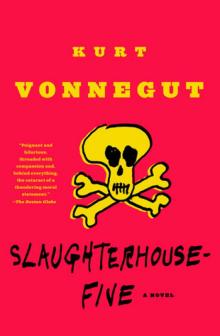 Slaughterhouse-Five
Slaughterhouse-Five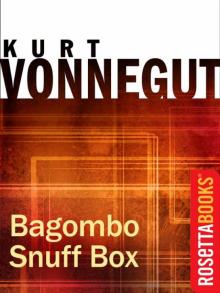 Bagombo Snuff Box: Uncollected Short Fiction
Bagombo Snuff Box: Uncollected Short Fiction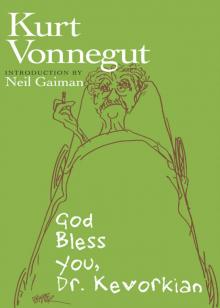 God Bless You, Dr. Kevorkian
God Bless You, Dr. Kevorkian Breakfast of Champions
Breakfast of Champions While Mortals Sleep: Unpublished Short Fiction
While Mortals Sleep: Unpublished Short Fiction Slapstick or Lonesome No More!
Slapstick or Lonesome No More! Cat's Cradle
Cat's Cradle The Sirens of Titan
The Sirens of Titan A Man Without a Country
A Man Without a Country Look at the Birdie: Unpublished Short Fiction
Look at the Birdie: Unpublished Short Fiction Bluebeard
Bluebeard Hocus Pocus
Hocus Pocus The Big Trip Up Yonder
The Big Trip Up Yonder Palm Sunday: An Autobiographical Collage
Palm Sunday: An Autobiographical Collage Jailbird
Jailbird Happy Birthday, Wanda June
Happy Birthday, Wanda June Welcome to the Monkey House
Welcome to the Monkey House Player Piano
Player Piano Fates Worse Than Death: An Autobiographical Collage
Fates Worse Than Death: An Autobiographical Collage Love, Kurt
Love, Kurt Timequake
Timequake God Bless You, Mr. Rosewater
God Bless You, Mr. Rosewater 2 B R 0 2 B
2 B R 0 2 B The Eden Express: A Memoir of Insanity
The Eden Express: A Memoir of Insanity Mother Night
Mother Night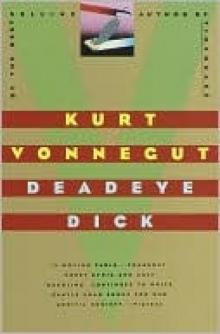 Deadeye Dick
Deadeye Dick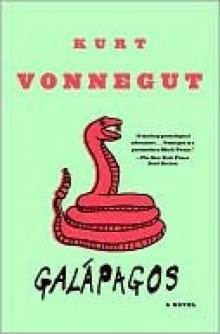 Galápagos
Galápagos Palm Sunday
Palm Sunday We Are What We Pretend to Be
We Are What We Pretend to Be Look at the Birdie
Look at the Birdie Basic Training
Basic Training Armageddon in Retrospect
Armageddon in Retrospect Basic Training (Kindle Single)
Basic Training (Kindle Single) If This Isn't Nice, What Is?
If This Isn't Nice, What Is? Bagombo Snuff Box
Bagombo Snuff Box The Petrified Ants
The Petrified Ants Cat's Cradle: A Novel
Cat's Cradle: A Novel Fates Worse Than Death: An Autobiographical Collage (Kurt Vonnegut Series)
Fates Worse Than Death: An Autobiographical Collage (Kurt Vonnegut Series)